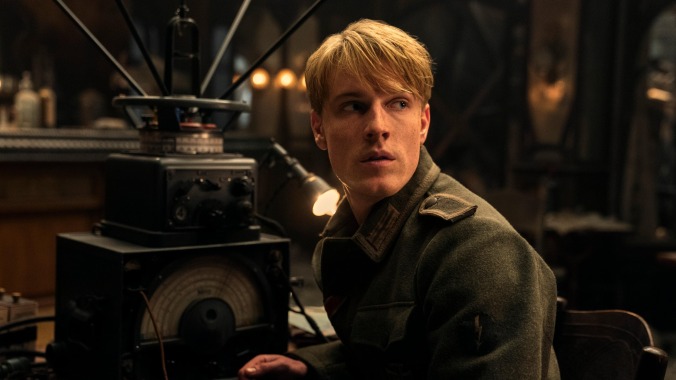All The Light We Cannot See review: A twisty, tricky World War II drama
Netflix's Mark Ruffalo miniseries has plenty of artistry, but the sprawling narrative presents a challenge for this adaptation of the Pulitzer-winning novel

Some great books simply aren’t suited to adaptation, though that’s never stopped Hollywood from trying. Judging the book by its cover, and its massive popularity, the appeal of bringing something like Anthony Doerr’s All The Light We Cannot See to the screen is obvious. The Pulitzer Prize-winning novel, set in France and Germany during World War II, is rich with fascinating characters and picturesque locations. But if you dig deeper into its pages you’ll find a dense, non-linear narrative told in lyrical, almost operatic prose. The features that made the novel an elegant page-turner also make it extraordinarily tricky to adapt.
And yet, here we are. All The Light We Cannot See arrives on November 2 on Netflix as a four-episode miniseries. Adapted for the screen by Steven Knight, whose last project was FX’s gritty retelling of Great Expectations, the series does its best to follow the scattered storylines laid out in Doerr’s novel, but constantly feels like it’s trying to bring the viewer up to speed. It’s like listening to a story told by an addled narrator who keeps interrupting themselves to fill you in on some past information that may or may not be pertinent to the story at hand. That may work fine in a novel, but it makes for a rather disjointed viewing experience. The series makes a few changes to the novel, combining characters, altering some familial relationships, and expanding upon a French resistance subplot that has promise, but doesn’t ultimately go anywhere.
The show begins with an air assault on the walled French port town of St. Malo in 1944, in the days preceding its liberation from the Nazis. We follow bombs dropped from a squadron of American planes as they fall onto the city, landing in the middle of a story already in progress. A teenage girl, Marie-Laure LeBlanc (Aria Mia Loberti), sits in the attic of a house, sending out a message to her missing father and great uncle via a radio transmitter and reading a passage from Jules Verne’s 20,000 Leagues Under The Sea. Though she is blind and completely on her own, we quickly learn she’s actually quite capable and self-sufficient.
Through flashbacks, we get some backstory on the house and its owners—Marie’s great aunt and uncle, siblings Madame Manec (Marion Bailey) and Etienne (Hugh Laurie). Marie’s father, Daniel (Mark Ruffalo), brought her to stay with them after the Nazi invasion of Paris, where he had been working as the master locksmith at the Museum of Natural History. Before leaving the museum, he secretly pocketed a famous and valuable diamond called the Sea of Flames, which is thought to be cursed. It is said that those who touch it will live a long life, but their family members will be doomed to suffer. The theft has made them a target of a particular Nazi, Sergeant Major Reinhold von Rumpel (Lars Eidinger), who believes the gem will cure him of a life-threatening illness. While Marie shelters from the bombardment alone in her home, he terrorizes the citizens of St. Malo searching for her.








![HBO teases new Euphoria, Larry David, and much more in 2026 sizzle reel [Updated]](https://img.pastemagazine.com/wp-content/avuploads/2025/12/12100344/MixCollage-12-Dec-2025-09-56-AM-9137.jpg)































